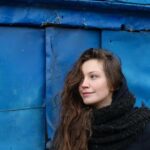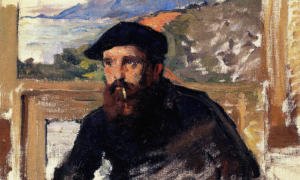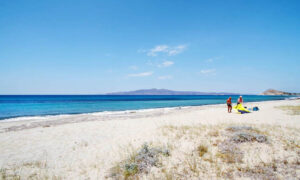It’s been awhile since my trip to the south of Chile but its landscapes still haunt my dreams. Patagonia, a vast land meticulously described by Charles Darwin in his travel diary and promoted worldwide by eponymous hiking brand, definitely belongs to one of the must-visit-in-a-lifetime places of our planet – especially since its glaciers are now melting faster than ever.
Patagonia is shared by Argentina and Chile, the latter being slightly more difficult to reach and therefore also less crowded. The best time to visit the natural parks of Patagonia is the period between December and March. In other words, in case you were thinking of escaping the northern hemisphere this winter – get inspired and go!
The south of Chile is reachable by plane only as its volcanoes and mountain ranges don’t allow for the construction of highways that would stretch throughout the country. To get to the first two national parks one has to fly to Puerto Montt and then go down the Scenic Route number 7, the famous Carretera Austral.
Pumalin: the face of the north
Park Pumalín is a million-acre collection of temperate rainforests, glaciers, thermal springs and fjords.
The biodiversity of this place is really stunning as half of all the plant species of the park are found nowhere else on earth.
The story of Pumalín is truly unique: a huge piece of land in 2017 gifted to the Chilean state – thus becoming a free-access national park – was endowed and managed by Douglas Tompkins, the founder of The North Face, and his wife Kris Tompkins, former CEO of Patagonia. Tompkins, who dedicated the last decades of his life to the protection of Patagonian wildlife, died while kayaking in his own park at the age of 72.
Avoiding the northern area of the park that can only be accessed by boat or on a sea kayak, we explored the hiking-friendly southern side. With dozens of prepared trails, Pumalín is great both for one-day trips and longer camping expeditions.
For instance, Darwin’s frog path not far from the “El Amarillo” park entrance leads you through untouched forest and waterfalls. For those travelers who wish to avoid the discomfort of wild camping, there are plenty of little cottages and cabañas available for short-term rent. We celebrated New Year’s Eve in one such cabin, and the proximity to real wilderness and stargazing made it very special.
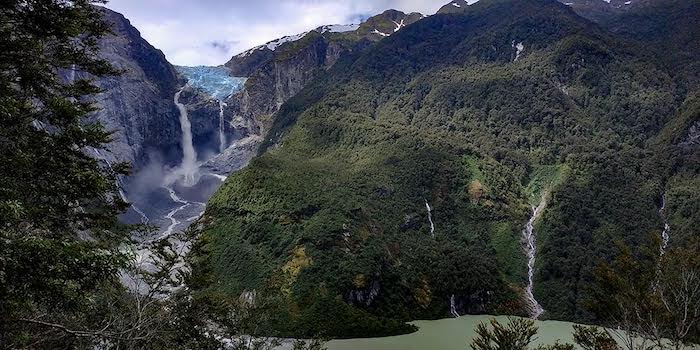
Queulat: the hanging glacier
An hour ride from Pumalín down the Carretera Austral, the Queulat National Park is worth a day-long visit. The main attraction, the stunning Hanging Glacier known as Ventisquero Colgante, fascinates with its blue color (the most intense shade of glacier blue I have ever seen, definitely sharper than Gray in Torres del Paine or Perito Moreno), two waterfalls produced by the melting waters, and impressive sounds produced by detaching pieces of ice that crash down into the lake.
The best view of the glacier and the lake awaits at the end of a 3.3-kilometer trail up the hill. Prepare yourself for a moderate climb and a lot of mud on the road. If you get lucky, you might spot a pudu, the world’s smallest deer, only 35 to 45 centimeters tall!
To complete the Ventisquero Colgantee experience and rest after the hike, take a 30-minute boat tour across the Laguna Templanos at the foot of the glacier. The boat trip is 10,000 Chilean pesos per person and the entrance fee is 9,000 pesos.
The tickets for the park have to be booked in advance at the official CONAF ticket sales system.
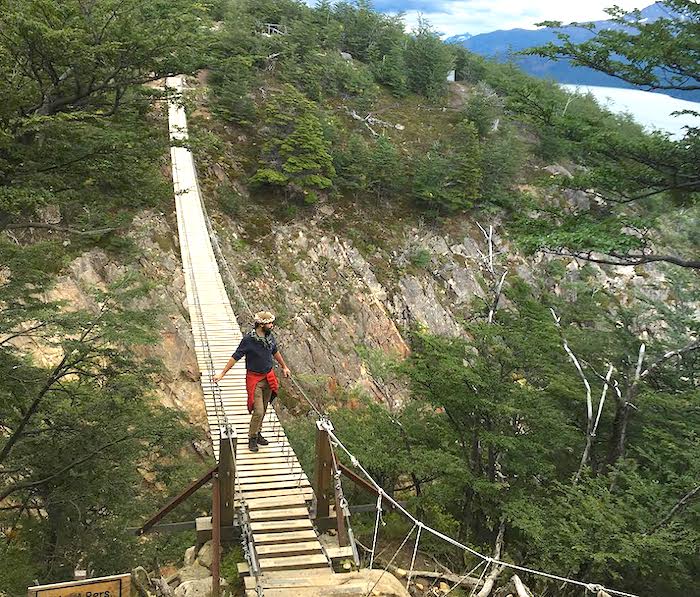
Torres del Paine: Crowded yet totally worth it
The famous Torres del Paine National Park is definitely the cherry on top of the cake. Located in Chilean Antarctica, Torres del Paine is one of the most visited national reserves in South America and was even elected the 8th Wonder of the World by TripAdvisor.
To get to the park you have to fly to Punta Arenas, an Antarctic gateway city on the shores of the Strait of Magellan, and then drive or take a bus (changing in Puerto Natales) 312 kilometers north to the entrance to the national park.
Due to its popularity, Torres del Paine is being carefully managed in order to protect its flora and fauna from human interference. The entrance to the park costs 35-49 euros, depending on the length of your stay. Tickets and refugios (campsites) have to be booked well in advance, especially if you plan on taking one of the longer trails.
The shortest option is a day-trip to the Torres, three mountain peaks, which if you are lucky to get there on a clear day are deeply captivating. We opted for a longer option, the W Trek which includes three overnight stays and takes you to the immense Gray Glacier.
On this rocky hike full of dramatic views, we spotted the largest bird of prey in the world, the Andean condor. Torres del Paine generally turned out to be a real gem in terms of wildlife: guanaco, ostrich, gray fox, flamingo, and armadillo — all easy to spot and at a very close distance. Despite being a popular attraction, the human presence in Torres del Paine is not too overwhelming: The beauty of this unique land leaves you breathless and puts everything else into the shade.
Once home from the edge of the world, you immediately start longing to come back to it. In fact, a 9-day hike in Torres del Paine is definitely on my list for the upcoming year!
And you … what are you waiting for?
–––––––––
Nina Danilova is an art writer and contemporary art curator. She is about to finish her PhD
in Culture Studies. She grew up in Russia and lived in Germany, Estonia, Italy and
Portugal, where she is currently based. She is passionate about history, languages, food,
and dancing.



